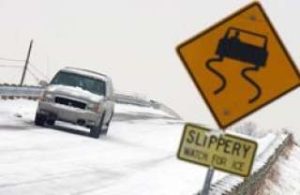Car Skidding 101
One of the scariest experiences a new teen driver can have is a skidding car. While there is no real way to show your teenager how to maneuver a car when actually skidding, as this would be dangerous to simulate, there are a few tips on what they can do if their car begins to skid.
There are two main types of skidding: over-steering (fishtailing), and under-steering (plowing).
- Over-steering occurs when, upon turning your car, the front wheels begin to turn but the back wheels spin out to the outside of the curve, causing the rear of the car to fishtail, or slide from side to side. If this should happen, let off the gas and keep your foot off the brake. If you already have your foot on the brake, let up slowly. If you are driving a car with manual transmission, disengage the clutch. Then quickly steer the car into the direction you want to go. This is known as “steering into the direction of the skid”. As your car begins to head in the correct direction, counter-steer to ensure your car stays on the intended path.
- Under-steering, or plowing, occurs when your car doesn’t turn as tightly as you want it to. Typically this happens when the pavement is wet, minimizing the amount of traction between the tires and the pavement. The tires cannot grip the road as well, causing the car to make a much wider turn than it should have.

Another type of car skidding is hydroplaning. Hydroplaning occurs when a car hits a puddle of water, or when it is raining or snowing. Any form of moisture on the ground can cause a tire to lift up off the pavement slightly, allowing water to get under the tire. Once this happens, you will briefly lose steering ability because your tires are unable to get any traction with the pavement.
You’ll know your car is beginning to hydroplane when your rpm gauge suddenly revs up a bit, and your tires, depending on front or rear wheel drive, will start to slide out just a little. Once your tires regain traction with the pavement, you’ll notice a small jerk in the direction you’re heading. If this happens, don’t worry, as it happens frequently with no harm done.
Awareness of the danger signs is one of the biggest lessons a new teen driver can learn. Therefore, teaching them to stay calm in all types of weather conditions is the best advice you can give.

